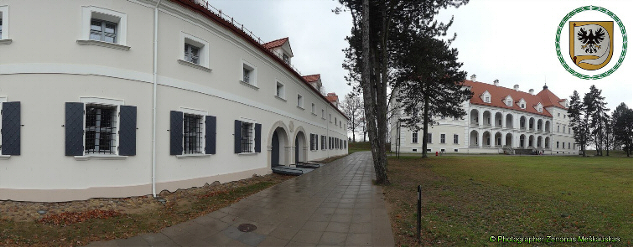Biržai Castle

Amateur Radio
Biržai Castle History
Amateur Radio Award Programs
"LITHUANIAN CASTLES & FORTS"
(The Award program not ready)


To protect his Biržai dominion and the northern border of Lithuania,
Duke Kristupas Radvila (1547-1603) built a modern fortress. Work started
on it in 1575 by building a dam at the confluence of the Apašcia and
Agluona rivers. In 1586-1589, they raised the embankments, built a
representational palace, an Evangelist Reformist church, an arsenal,
grain stores and warehouses, barracks and other buildings. The fortress
and the town were a single defence complex. The fortress was finished in
1589.
The Grand Duke of Lithuania and King of Poland Zigmantas Vaza
and later his descendents would not refute their claims to the Swedish
throne, which meant war for Lithuania and Poland. The war with Sweden
lasted many decades (1600-1635 and 1655-1660) and in 1625 the Swedes
turned Biržai Castle into ruins.
Kristupas Radvila II initiated a considerable reconstruction of
the fortress in Biržai, with work starting in 1637. This wasn’t just a
restoration; the fortifications were changed from Italian to Dutch,
which meant that the earth bastions and ramparts surrounding the
fortress became its main features. Reconstruction also involved the
territory of the castle and residential palace.
In 1640, Biržai was inherited by the future grand hetman of
Lithuania, son of Kristupas II, Jonušas Radvila (1612-1655), who
continued the reconstruction of the castle.
In autumn 1655, the Biržai fortress changed hands again and
became Swedish. In 1659, Jonušas Radvila’s cousin, Duke Boguslavas
Radvila (1620-1669) made brought the castle back into the hands of the
Radvila family. Despite living in Karaliauciai (Konigsberg), he took
care to renew the castle’s reconstruction, which had been hindered by
the wars. In 1662, a general plan of the fortress was drawn up. However,
the reconstruction was stopped in 1669 by the duke’s death. Boguslavas
Radvila was the last male offspring of the Biržai-Dubingiai branch of
the Radvila family. According to his will, the fortress went to
Boguslavas’ daughter Liudvika Karolina (1667-1695). She renewed the
reconstruction process in 1671 and work continued until 1682. This
fortress was considerably larger than the first one. The palace,
fortifications and 21 buildings made it a huge defensive complex.
On 26 February 1701, during the Great Northern War (1700-1721),
Russian Tsar Peter I and King of the Polish-Lithuanian Commonwealth
Augustas II signed a treaty against the Swedes in Biržai. In August that
same year, the Swedes occupied Biržai and kept it until 1703.
On 14 September 1704, the army of Swedish General A. L.
Lewenhaupt took over the fortress once again. The Swedes blew up the
palace and the fortress buildings before retreating.
From www.birzumuziejus.lt
